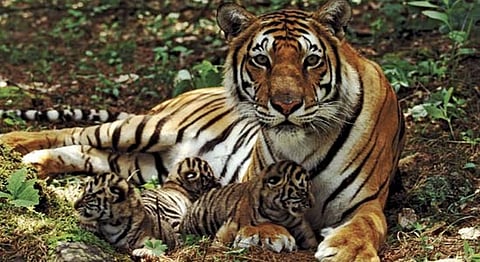
- HOMEGROWN WORLD
- #HGCREATORS
- #HGEXPLORE
- #HGVOICES
- #HGSHOP
- CAREERS
- ABOUT US
- CONTACT US

Earlier this year we celebrated when we heard of reports of the rise in the tiger population, but statistics released in a census report on Friday show that while the tiger population may have increased, poaching continues to be rampant despite constant efforts to curb the illegal practice. The Wildlife Protection Society of India’s (WPSI) report states that the number of tigers that have already been poached in the first four months of 2016 has already exceeded the total incidents of poaching of 2015. As of April 26, twenty eight tigers have been poached, that’s three more than 2015. The numbers have left wildlife groups and lovers astounded, as in the past few years numerous anti-poaching initiatives were launched to protect India’s national animal, as well as awareness programs to educate people on the importance of protecting these majestic big cats.
“The stats are worrying indeed,” said Tito Joseph, program manager of WPSI. “Poaching can only be stopped when we have coordinated, intelligence-led enforcement operations, because citizens of many countries are involved in illegal wildlife trade,” he added. “It’s a transnational organised crime.”
[caption id=”” align=”aligncenter” width=”700”]
India is home to two-thirds of the world’s tiger population, which is a matter of great national pride. Increasing numbers to 2,226 in 2014 from 1,706 in 2010, the government has undertaken anti-poaching patrols and projects, even offering compensation to farmers and villagers who are harmed by tigers so as to prevent retaliation killings, all seemed to be well. The rise is good news, but WPSI’s latest report does raise doubts regarding the actuality and on-ground effects of conservation efforts. Tigers are an endangered species that are highly coveted for their skin, meat and bones that are sold on the black market. Compared to the 100,000 wild tigers India hosted in the 1900s, according to the World Wildlife Fund, 2,226 is a shameful statistic.
As Prerna Bindra points out, tigers are seen as hurdles when it comes to the country’s development. In January, the Supreme Court dismissed petitions submitted by environment activists who called for an intervention to protect a tiger corridor between Pench and Kanha wildlife parks, in Madhya Pradesh, where work to widen the National Highway 7 was posing a threat to the animal’s natural habitat. “We need prosperity not only for animals but humans too. We also need development, and this project is meant for that,” a bench headed by Chief Justice TS Thakur stated. What such statements bring into question is the status that India’s beloved big cat holds in the chain of importance. Incidents of killing and poaching continue even within national parks and reserves, and only strict action on part of the government, with complete enforcement of the law on-ground, can change this dire situation.
Feature Image courtesy of Tom Brakefield/CORBIS
Words: Sara Hussain
